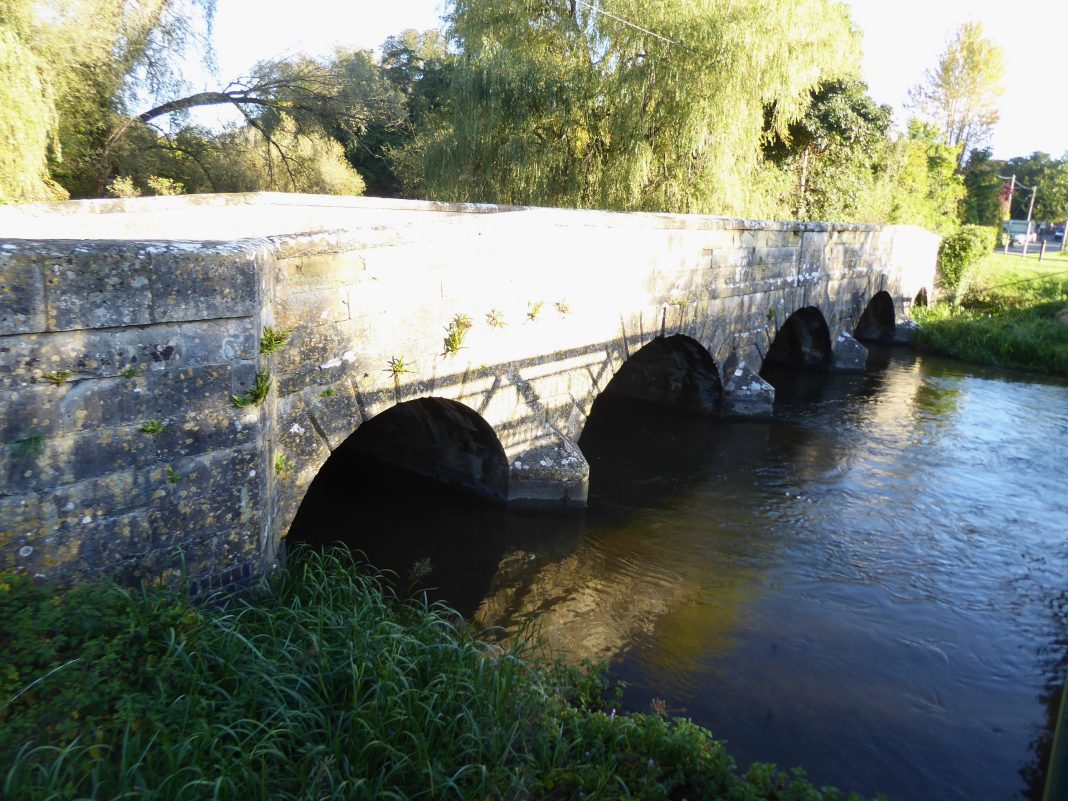Switchbacks to Sarum.
It’s a crisp, sunny autumn morning. Leaving town I cross the Avon by an old bridge and shortly afterwards cross it again. I must check the map to see what’s happening.
Up and down the downs again, why did I think it would be all flat today?



The first village, Great Dunford, was only a few houses and a church.
As usual, I make my way to the church, dating from the C10th with very little mdern ‘improvements’ 


But I am distressed to see dog s*** in the church aisle. Can you believe it? I had nothing to clear it up with and nobody was about in the village to report it to. Disgusting.
I again cross the Avon to arrive at the Bridge Inn just in time for a morning coffee.

 Back on the east bank, past Little Durnford’s one house and then into the woods for some more undulations. The bridleway I am following is probably an ancient route across these downs. Ahead on the horizon the distinctive spire of Salisbury Cathedral made an appearance and was there for the rest of the day. At 404ft the tallest church spire in England. (Preston’s St.Walburge’s is the third tallest after Salisbury and Norwich)
Back on the east bank, past Little Durnford’s one house and then into the woods for some more undulations. The bridleway I am following is probably an ancient route across these downs. Ahead on the horizon the distinctive spire of Salisbury Cathedral made an appearance and was there for the rest of the day. At 404ft the tallest church spire in England. (Preston’s St.Walburge’s is the third tallest after Salisbury and Norwich)

Coming out of the hills I pass this delightful cottage, aren’t they all? 
And there in front of me is the earthworks of Old Sarum.
I didn’t realise it was so large. I have progressed from Barbury Castle to Avebury, and now the grandest of them all, Old Sarum. Despite often visiting Salisbury and Stonehenge*, whilst I worked down in Bournemouth, I was unaware of the existence of this ancient Iron Age fort with its Medieval Castle and Cathedral.
The Iron Age hillfort was established here about 400 BC. It was then occupied after the Roman conquest of Britain when it became known as Sorviodunum.
William the Conqueror recognised Old Sarum’s potential shortly after the Conquest in the C11th A motte was constructed in the centre of the hillfort, and then an inner set of timber fortifications created an ideal army base.
The inner castle was established and a section of the bailey was selected as the site for a new cathedral in 1075. Old Sarum’s importance as an administrative base grew and the new cathedral became a religious and learned centre.
In 1226 the cathedral was moved to nearby Salisbury, although the castle remained an administrative centre into the 14th century and then all was mostly abandoned.
- (Stonehenge was accessible on foot from Amesbury but I had heard awful stories of overcommercialisation so I gave it a miss. There were so many other sites to be visited instead.)
I first walk around the outer ramparts, sometimes on the ridge and others in the ditch, a mile circuit with the castle mound central to it all.
Some lovely beech trees have established themselves along the ramparts.
There is a short section of the wall that once guarded the outer ramparts.
I then examine the footprint of the old cathedral. 
I reluctantly pay English Heritage to look around the inner castle, reached by a bridge where the old draw bridge had existed. You need an aerial image to realise the full extent of Old Sarum.
You need an aerial image to realise the full extent of Old Sarum. 


It is all well documented, and I enjoy the experience, but is it worth £6.50?
Back on track, the cathedral spire is coming closer. Chatting with dog walkers, I receive lots of advice as to the best way into town but I stick to the Sarsen Way and PAT signs to the end and enjoy a rural route, avoiding roads.
That is until I get involved with new flood defence and parkland improvements.
But by six o’clock, I was in the centre of town, only a few blocks away from the cathedral.
It certainly hits you in the eye when getting close up.  As you have seen the original cathedral was located at Old Sarum, two miles away until it was decided to move it to Salisbury. Foundation stones for the new building were laid in 1220. By 1258 the nave, transepts and choir were complete. The cloisters were added in 1240, and the tower and spire were constructed by 1330.
As you have seen the original cathedral was located at Old Sarum, two miles away until it was decided to move it to Salisbury. Foundation stones for the new building were laid in 1220. By 1258 the nave, transepts and choir were complete. The cloisters were added in 1240, and the tower and spire were constructed by 1330.
I am too late to go inside but enjoy the surroundings in the late afternoon sunshine. There are many American and Japanese voices around. 


In the grounds was a statue by Elizabeth Frink set me off on a search which would lead me to the Swindon Art Gallery. I have admired her work at the Hepworth and YSP in the past.

‘This figure symbolises … human dignity and creativity over militarism and totalitarian disregard for human dignity and rights.’ Stephen Gardiner. Her tense but powerful presence exists beside the tourists and the worshipers.
I wanted to hold her hand at the end of my walk.

***
A convivial night was enjoyed at the Merchants House Hotel.

































